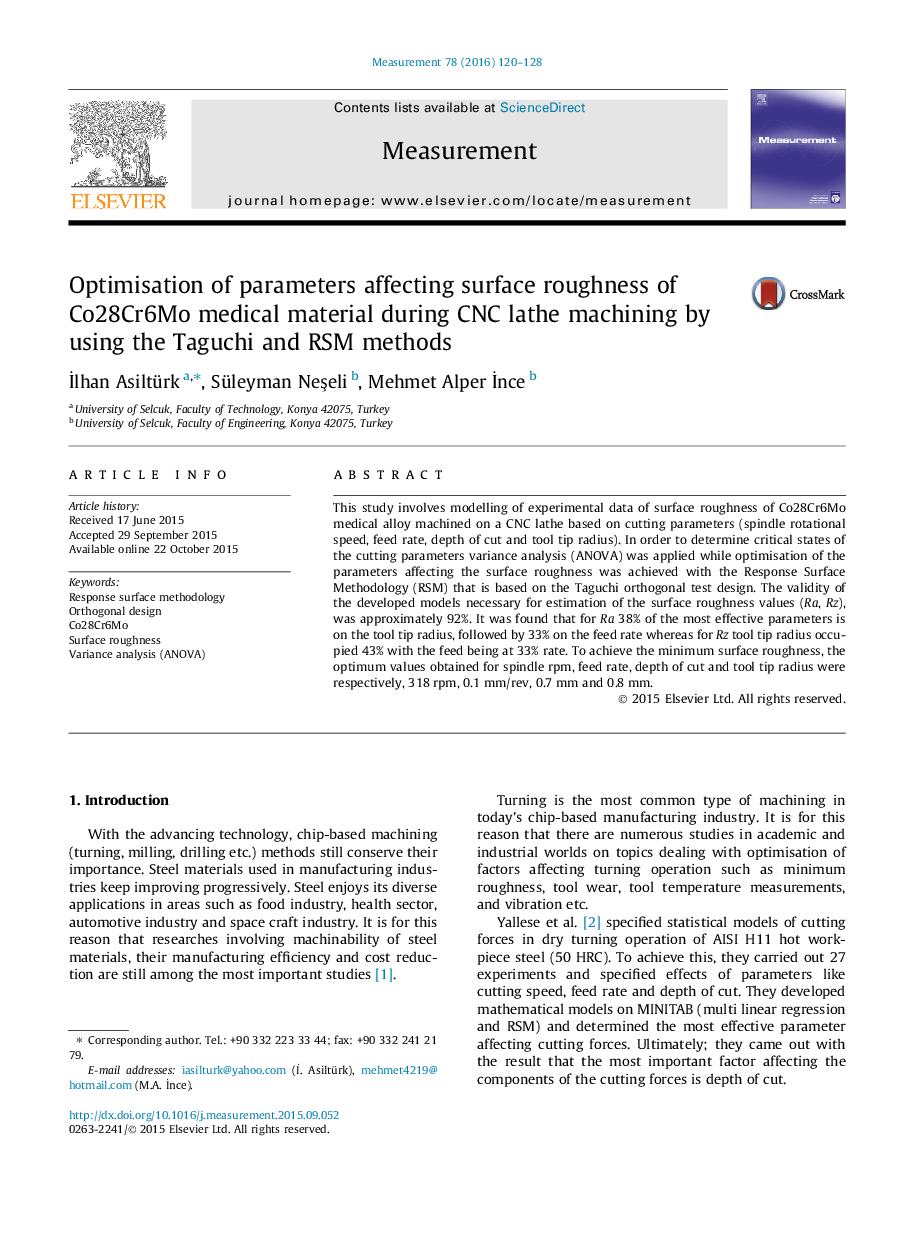| Article ID | Journal | Published Year | Pages | File Type |
|---|---|---|---|---|
| 727213 | Measurement | 2016 | 9 Pages |
•Mathematic models are developed to determine multiobjective optimal cutting conditions.•Surface roughness, as a function, is obtained using the response surface methodology.•The tool tip radius is the dominant factor affecting surface roughness of medical material.
This study involves modelling of experimental data of surface roughness of Co28Cr6Mo medical alloy machined on a CNC lathe based on cutting parameters (spindle rotational speed, feed rate, depth of cut and tool tip radius). In order to determine critical states of the cutting parameters variance analysis (ANOVA) was applied while optimisation of the parameters affecting the surface roughness was achieved with the Response Surface Methodology (RSM) that is based on the Taguchi orthogonal test design. The validity of the developed models necessary for estimation of the surface roughness values (Ra, Rz), was approximately 92%. It was found that for Ra 38% of the most effective parameters is on the tool tip radius, followed by 33% on the feed rate whereas for Rz tool tip radius occupied 43% with the feed being at 33% rate. To achieve the minimum surface roughness, the optimum values obtained for spindle rpm, feed rate, depth of cut and tool tip radius were respectively, 318 rpm, 0.1 mm/rev, 0.7 mm and 0.8 mm.
Graphical abstractFigure optionsDownload full-size imageDownload as PowerPoint slide
